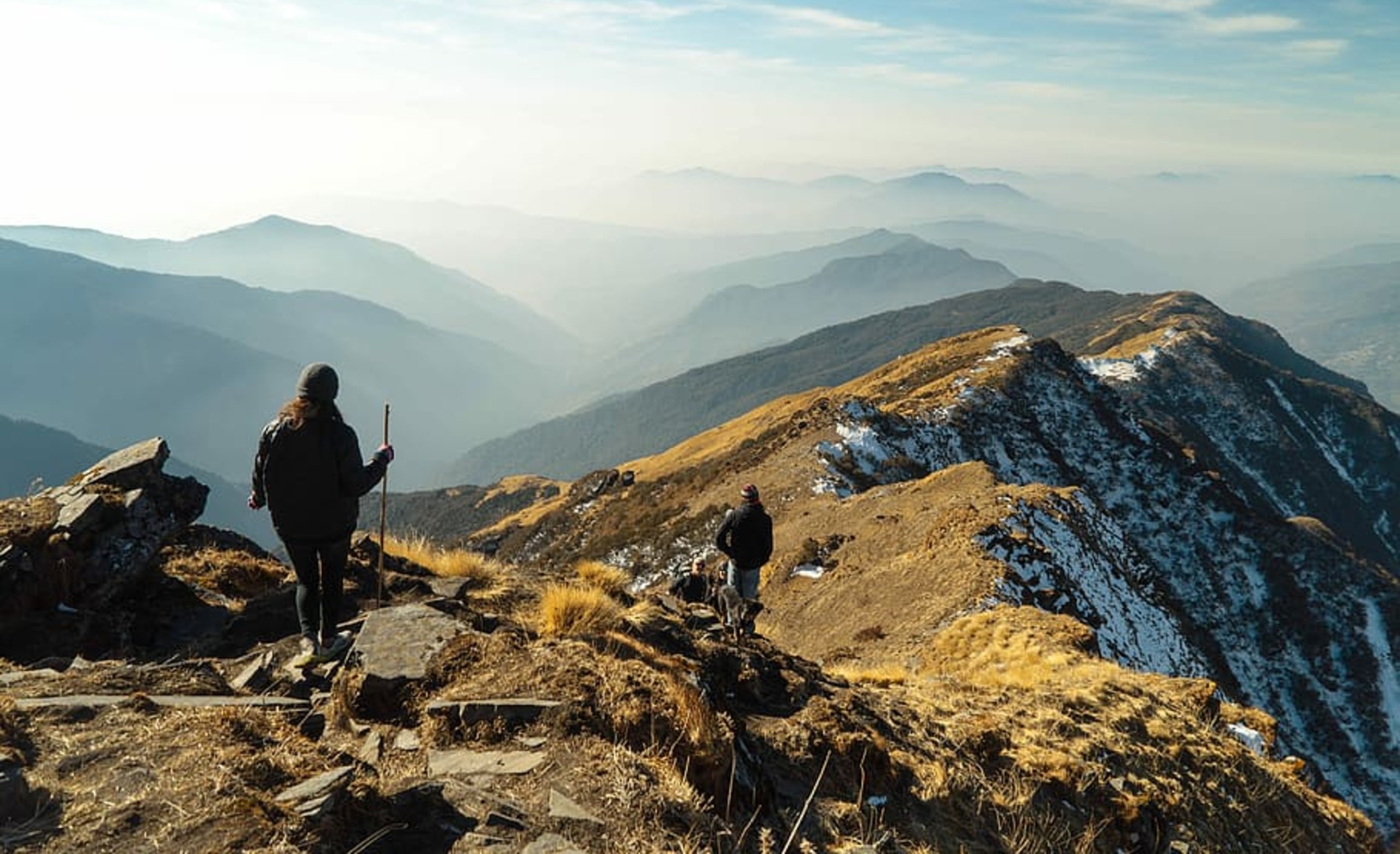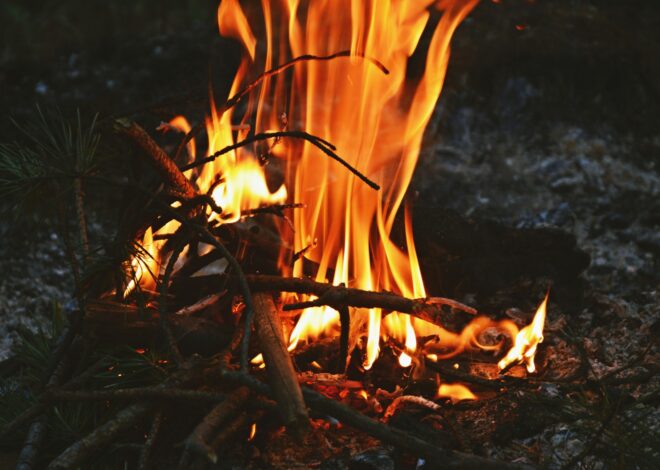
Surviving In The Mountains
Welcome to our comprehensive guide on surviving in the mountains. Nestled high above the clouds, where the air is crisp and the views are breathtaking, lies a realm of untamed beauty and unforgiving challenges – the mountains.
Surviving in these rugged landscapes requires more than just physical strength; it demands resilience, resourcefulness, and a deep connection to nature. Join us on an exhilarating journey as we delve into the art of mountain survival and uncover the secrets to conquering one of Mother Nature’s most formidable playgrounds.
The Basics of Mountain Survival
Nestled among towering peaks and rugged terrain, the mountains offer a breathtaking yet challenging environment for anyone seeking adventure. When venturing into these majestic landscapes, understanding the basics of mountain survival is crucial.
First and foremost, knowledge is power in the mountains. Familiarize yourself with the area’s topography, climate patterns, and potential hazards before setting out on your journey. Be prepared mentally and physically for the demands that high altitudes can place on your body.
Having the right gear is essential when it comes to surviving in the mountains. From sturdy hiking boots to layers of clothing for changing weather conditions, ensuring you have proper equipment can make all the difference in an emergency situation.
Additionally, knowing how to navigate through mountainous terrain using a map and compass or GPS device is vital for staying on track and avoiding getting lost. Always have a backup plan in case technology fails you during your expedition.
Remember that preparation is key when it comes to facing any challenges that may arise while exploring the great outdoors. Stay vigilant, stay informed, and embrace each moment as an opportunity to learn and grow amidst nature’s grandeur.
Essential Supplies and Gear
When it comes to surviving in the mountains, having the right supplies and gear can make all the difference. Your backpack should be filled with essentials like a reliable tent or tarp for shelter, a sleeping bag rated for cold weather, and ample layers of clothing to stay warm at night. Don’t forget about food rations that are lightweight yet packed with energy, as well as a portable stove for cooking.
Water is crucial for survival, so bring along a water filter or purification tablets to ensure your water source is safe to drink. A map and compass are essential tools for navigation in the rugged terrain of the mountains. Pack a first aid kit with essential supplies like bandages, pain relievers, and antiseptic wipes.
A multitool can come in handy for various tasks such as repairing gear or building makeshift shelters. Pack a headlamp or flashlight with extra batteries to navigate in low light conditions. With these essentials on hand, you’ll be better equipped to handle whatever challenges the mountains throw your way!
Navigation and Orientation in the Mountains
When exploring the mountains, having a solid grasp of navigation and orientation is crucial for survival. Getting lost in the vast wilderness can be dangerous, so it’s essential to always have a plan before heading out.
One key tool for navigation is a map and compass. Familiarize yourself with how to read them properly before embarking on your journey. Pay attention to landmarks such as peaks, rivers, or valleys that can help guide you along your route.
In addition to maps and compasses, GPS devices can also be useful but remember they are not foolproof and may fail in remote areas with poor signal reception. Always carry extra batteries or a backup power source.
Learning how to use natural signs like the sun’s position, wind direction, and plant growth patterns can also aid in orienting yourself within the mountain terrain. Trust your instincts but rely on tangible methods of navigation when needed.
Building Shelter and Starting a Fire
When you find yourself in the mountains, knowing how to build a shelter and start a fire is crucial for survival. Shelter provides protection from the elements, while fire offers warmth and cooking capabilities.
Look for natural shelters like caves or overhanging rocks. If those aren’t available, construct a makeshift shelter using branches, leaves, and any available materials. Make sure it’s sturdy enough to withstand wind and rain.
Starting a fire may seem daunting but can be achieved with basic tools like matches or a lighter. Gather dry tinder like twigs, leaves, or bark to ignite the flames. Gradually add larger sticks and logs to keep the fire going.
Remember to clear any debris around your fire pit to prevent accidental spread of flames. Always keep water nearby in case of emergencies. Mastering these skills will increase your chances of surviving in the mountains.
Finding Food and Water Sources
When you find yourself in the mountains, sourcing food and water becomes a crucial aspect of survival. Water is essential for hydration, so locating streams, rivers, or natural springs should be a top priority. Remember to purify any water you find before drinking to avoid getting sick.
As for food sources, being resourceful is key. Look for edible plants like berries or roots but make sure you can positively identify them as safe to eat. Insects can also provide much-needed protein in a pinch – just ensure they are not poisonous.
If you’re skilled at fishing or hunting, utilizing these methods can yield more substantial sustenance. However, always follow local regulations and ethical practices when harvesting wildlife for food.
Exploring your surroundings and staying observant will increase your chances of finding suitable food and water sources while navigating the mountain terrain.
Staying Safe from Wildlife and Natural Hazards
When surviving in the mountains, it’s crucial to stay vigilant and prepared for encounters with wildlife. Be aware of your surroundings and make noise while hiking to avoid surprising animals. Keep food stored securely to prevent attracting unwanted visitors like bears or raccoons.
Understanding the natural hazards that come with mountain terrain is essential for staying safe. Familiarize yourself with potential risks such as avalanches, rockfalls, or sudden weather changes. Always check weather forecasts before heading out and be ready to adjust your plans accordingly.
Carrying a first aid kit can be a lifesaver in case of emergencies caused by either wildlife encounters or natural disasters. Knowing how to administer basic first aid could make all the difference when help isn’t readily available.
Respecting nature and being mindful of its unpredictability are key aspects of staying safe in the mountains. By being informed and prepared, you can enjoy the beauty of the wilderness while minimizing risks to yourself and others around you.
Mental and Physical Preparation for Mountain Survival
Preparing yourself mentally and physically for surviving in the mountains is crucial. Mentally, you need to stay calm and focused in challenging situations. Keeping a positive mindset can help you overcome obstacles with resilience.
Physical preparation involves staying fit and building endurance. Regular exercise, such as hiking or running, can improve your strength and stamina for navigating rugged terrain. Additionally, practicing survival skills beforehand can boost your confidence in handling emergencies.
It’s important to familiarize yourself with basic first aid techniques and wilderness survival tactics. Knowing how to administer CPR or treat minor injuries can make a difference in critical moments.
Remember to pack essential items like a map, compass, water purification tablets, and high-energy snacks. Being well-equipped will give you peace of mind during your mountain adventures.
Tips for Navigating Extreme Weather Conditions
When facing extreme weather conditions in the mountains, preparation is key. Always check the weather forecast before heading out and pack accordingly. Dress in layers to stay warm and protect yourself from sudden changes in temperature.
Invest in high-quality waterproof gear to shield yourself from rain, snow, or strong winds. Pack extra food and water to sustain you through unexpected delays caused by inclement weather.
If caught in a storm, seek shelter immediately to avoid exposure to harsh elements. Stay dry to prevent hypothermia by changing into dry clothes if needed.
Keep an eye on the sky for signs of impending bad weather and be ready to adjust your plans accordingly. Trust your instincts and don’t hesitate to turn back if conditions become too dangerous.
Remember that safety should always come first when navigating extreme weather conditions in the mountains – it’s better to be safe than sorry!
Embracing the Challenge of Surviving in the Mountains
Surviving in the mountains requires a unique set of skills and mindset. It’s not just about physical strength but also mental resilience. By mastering navigation, shelter building, finding food and water sources, and staying safe from wildlife and natural hazards, you can increase your chances of survival in this challenging environment.
Remember that preparation is key. Equip yourself with essential supplies and gear, practice navigation techniques, learn how to build a shelter and start a fire efficiently, and understand where to find food and water sources. Stay informed about weather conditions to navigate extreme situations safely.
Above all, embrace the challenge of surviving in the mountains as an opportunity for growth. The experience will test your limits but also reward you with a deeper connection to nature and yourself. So next time you venture into the mountains, go prepared, stay vigilant, and relish every moment of this incredible journey towards self-reliance amidst stunning landscapes.
Surviving in the mountains is not just about endurance; it’s about embracing nature’s raw beauty while honing your survival instincts for whatever challenges may come your way.



